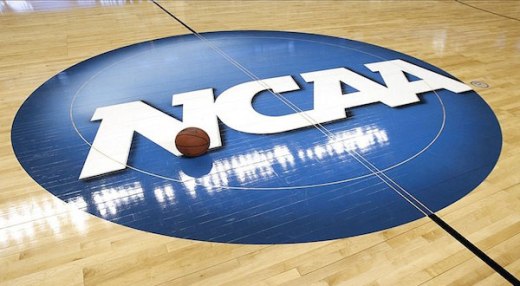The NCAA tournament was just right at 64 teams.
No one, I think, disputes this.
The 64-team bracket — clean and neat, without play-in games or different amounts of tournament rounds for any team — hit the sweet spot. It catapulted the Big Dance to another level in terms of national interest and captivating, emotional television.
Before the 64-team bracket, the small schools didn’t ordinarily get their shots at Goliath. The 1-16 upset has not yet happened, but the 2-15 and 3-14 upsets still make the little kid emerge in all of us. That’s a product of the 64-team field. The clutter of the First Four is a moderately interesting diversion before the round of 64, but it has only invited questions, chiefly:
1) Why put two 16 seeds against each other, thereby depriving the loser of its chance to play a big boy in the round of 64, when everyone’s watching?
2) Why invite more mediocre bubble teams into the field?
The 64-team setup was great. Basketball fans and writers, and TV pundits as well, wouldn’t want to return to a 48-team field, but they sure don’t want expansion to 96, either.
Yet… this persistent issue of regular season conference champions losing in their conference tournaments keeps rearing its ugly head. It’s miserable as a detached third party to see teams such as San Diego State and Akron control their leagues; make the tournament final; lose said final by a small margin in the final minute; and know that they’re bound for the NIT. That is a TERRIBLE thing — not terrible in a life-or-death sense, of course, but terrible in its own small context on its own terms. Two and a half months go out the window in the space of one game and, more precisely, one minute.
That ain’t right.
Yet, as we all know, the conference tournaments are part of what makes March Madness what it is… it’s an arresting and enthralling television experience, a core component of this magical month.
So, something ought to be done… and not just this particular reform, either. Something more needs to happen… but what?
*
We had the perfect tournament field at 64 teams. The NCAA messed with it, though, and wanted 68. With this point firmly in mind, it’s impossible to deny that any additional tournament expansion will bring forth the concern that future expansion to 80 or 96 teams is inevitable, due to the dynamic known as “mission creep.” This is akin to the worries in college football that as soon as the playoff field is expanded to eight teams, that will open the door to 16.
Well, I’m on record as saying that I don’t want a 16-team CFB Playoff… but I would prefer eight.
Similarly, while I would not want a 96-team NCAA tournament, I think it’s time to go to 72, with an allowance for moving to 80.
WHY, MATT? NOOOOOOOOOOOOO. HAVE YOU LOST YOUR MARBLES?
Well, he said sheepishly, this is exactly how conference champions in the one-bid leagues can be protected. This is the most feasible solution available, because the other solution is to radically reduce the amount of at-large bids on the board.
The compromise is to slightly reduce the number of at-large bids on the board, but not to the point that the window of opportunity becomes little more than a space the size of a box of cereal.
At the present time, 36 at-large bids exist in the tournament field. Expansion to 72 teams would ostensibly push that number to 40, but here’s the tweak which would protect at least some of the conference champions in one-bid leagues: Let’s give a “protected” at-large bid to (at least) four one-bid conference champions, or perhaps four champions of leagues which exist outside the Power 5 conferences, the Big East, and The American.
This plan wouldn’t save everyone, but it would ensure that when a team such as Monmouth or Valparaiso falls in its conference tourney, it can still be assured of a spot in the Big Dance.
If that’s the cost of expanding from 68 to 72 — with a First Four becoming a “Great Eight” to account for expansion — then college basketball ought to be willing to pay the price.
The “Great Eight,” under this setup, would have four bubble games. The other four games would be a combination: Two games would be 16-seed play-in games, but the other two “Great Eight” games would match the four protected at-large teams. This way, the tiny conferences; the mid-majors; and the high majors would all get win shares, making everyone happy.
You might cringe at expansion to 72 teams, but it’s time to do so, and as shown above, it would value the work of conference champions in one-bid leagues.
Who’s with me?
This should be the future of Selection Sunday and the NCAA tournament.

